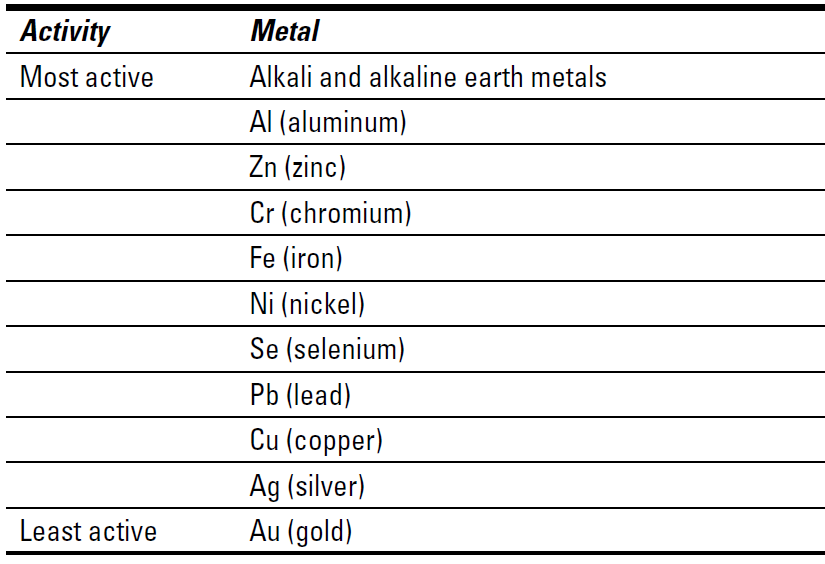

علم الكيمياء

تاريخ الكيمياء والعلماء المشاهير

التحاضير والتجارب الكيميائية

المخاطر والوقاية في الكيمياء

اخرى

مقالات متنوعة في علم الكيمياء

كيمياء عامة


الكيمياء التحليلية

مواضيع عامة في الكيمياء التحليلية

التحليل النوعي والكمي

التحليل الآلي (الطيفي)

طرق الفصل والتنقية


الكيمياء الحياتية

مواضيع عامة في الكيمياء الحياتية

الكاربوهيدرات

الاحماض الامينية والبروتينات

الانزيمات

الدهون

الاحماض النووية

الفيتامينات والمرافقات الانزيمية

الهرمونات


الكيمياء العضوية

مواضيع عامة في الكيمياء العضوية

الهايدروكاربونات

المركبات الوسطية وميكانيكيات التفاعلات العضوية

التشخيص العضوي

تجارب وتفاعلات في الكيمياء العضوية


الكيمياء الفيزيائية

مواضيع عامة في الكيمياء الفيزيائية

الكيمياء الحرارية

حركية التفاعلات الكيميائية

الكيمياء الكهربائية


الكيمياء اللاعضوية

مواضيع عامة في الكيمياء اللاعضوية

الجدول الدوري وخواص العناصر

نظريات التآصر الكيميائي

كيمياء العناصر الانتقالية ومركباتها المعقدة


مواضيع اخرى في الكيمياء

كيمياء النانو

الكيمياء السريرية

الكيمياء الطبية والدوائية

كيمياء الاغذية والنواتج الطبيعية

الكيمياء الجنائية


الكيمياء الصناعية

البترو كيمياويات

الكيمياء الخضراء

كيمياء البيئة

كيمياء البوليمرات

مواضيع عامة في الكيمياء الصناعية

الكيمياء الاشعاعية والنووية
Single displacement reactions: Kicking out another element
المؤلف:
John T. Moore, EdD
المصدر:
Chemistry Essentials For Dummies
الجزء والصفحة:
p 93
9-1-2017
2247
Single displacement reactions: Kicking out another element
In single displacement reactions, a more active element displaces (kicks out) another less active element from a compound. For example, if you put a piece of zinc metal into a copper (II) sulfate solution, the zinc displaces the copper, as this next equation shows
Zn(s) + CuSO4(aq) → ZnSO4(aq) + Cu(s)
The notation (aq) indicates that the compound is dissolved in water — in an aqueous solution. Because zinc replaces copper in this case, it’s said to be more active. If you instead place a piece of copper in a zinc sulfate solution, nothing will happen.
Using the activity series
Table below shows the activity series of some common metals. Notice that because zinc is more active in the table, it will replace copper, just as the earlier equation shows.

Writing ionic and net-ionic equations
Take a look at the reaction between zinc metal and a copper (II) sulfate solution. I’ve written this reaction as a molecular equation, showing all species in the neutral form.
Zn(s) + CuSO4(aq) → ZnSO4(aq) + Cu(s)
However, these reactions normally occur in an aqueous (water) solution. When you dissolve the ionically bonded CuSO4 in water, it breaks apart into ions (atoms or groups of atoms that have an electrical charge due to the loss or gain of electrons). The copper ion has a 2+ charge because it lost two electrons. It’s a cation, a positively charged ion. The sulfate ion has a 2– charge because it has two extra electrons. It’s an anion, a negatively charged ion.
Here’s an equation that shows the ions separately. Equations in this form are called ionic equations because they show the reaction and production of ions. Notice that the sulfate ion, SO42–, doesn’t change in the reaction:
Zn(s) + Cu2+ + SO42– → Zn2+ + SO42– + Cu(s)
Ions that don’t change during the reaction and are found on both sides of the equation in an identical form are called spectator ions. Chemists often omit the spectator ions and write the equation showing only those chemical substances that are changed during the reaction. This is called the net-ionic equation:
Zn(s) + Cu2+ → Zn2+ + Cu(s)
 الاكثر قراءة في مواضيع عامة في الكيمياء اللاعضوية
الاكثر قراءة في مواضيع عامة في الكيمياء اللاعضوية
 اخر الاخبار
اخر الاخبار
اخبار العتبة العباسية المقدسة

الآخبار الصحية















 قسم الشؤون الفكرية يصدر كتاباً يوثق تاريخ السدانة في العتبة العباسية المقدسة
قسم الشؤون الفكرية يصدر كتاباً يوثق تاريخ السدانة في العتبة العباسية المقدسة "المهمة".. إصدار قصصي يوثّق القصص الفائزة في مسابقة فتوى الدفاع المقدسة للقصة القصيرة
"المهمة".. إصدار قصصي يوثّق القصص الفائزة في مسابقة فتوى الدفاع المقدسة للقصة القصيرة (نوافذ).. إصدار أدبي يوثق القصص الفائزة في مسابقة الإمام العسكري (عليه السلام)
(نوافذ).. إصدار أدبي يوثق القصص الفائزة في مسابقة الإمام العسكري (عليه السلام)


















